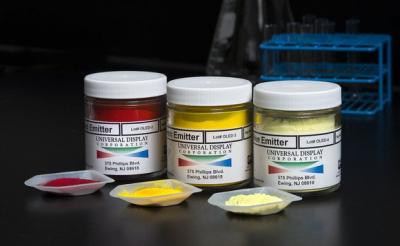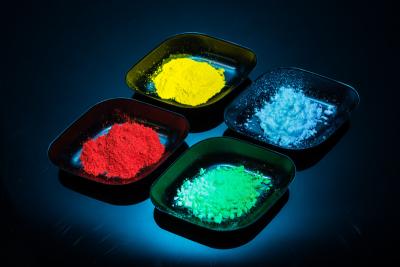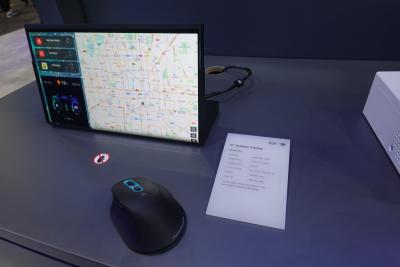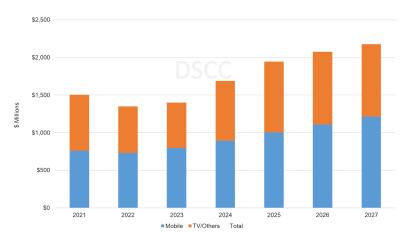Merck in dialogue: Next generation OLED materials
Merck KGaA is a pioneer in high performance OLED material development, supplying a range of materials for AMOLED makers since the industry’s inception.
To learn more about Merck’s materials and views on the OLED industry, we conducted an interview with Dr. Georg Bernatz, Merck Electronics’ Global Head of OLED Technical Marketing. Georg Bernatz has received a PhD in Physics from the Philipps-Universität in Marburg, Germany in 2000. In 2004, Georg joined Merck, where, over the years, he worked in various functions and on various topics in the field of Liquid Crystals for displays. In 2018, Georg changed to OLED, leading OLED Physics Product Research, and in 2020 he became responsible for all Physics & Application Labs in Darmstadt for Display materials. Since October 2023, Georg is heading Merck’s Global Technical Marketing for OLED materials.
Hello Dr. Bernatz. Can you bring us up to date quickly on Merck's current OLED material products? What do you offer to OLED display makers?
Merck KGaA, Darmstadt, Germany is very active in the design, development and production of a broad variety of high performing OLED materials, with a strong focus on hole and electron transport materials (HTM, ETM), host materials for phosphorescent emitters as well as activities in the field of high efficiency blue.
UDC and BOE extend their PHOLED material supply and license agreements
Universal Display announced that it signed a long-term OLED material supply and license agreements with BOE Technology Group. This is actually an extension of UDC's previous agreement with UDC (which was signed in 2017). UDC did not disclose the financial terms.
BOE recently announced that it shipped over 100 million AMOLED displays in 2023.
UBI: Samsung to delay the introduction its first blue phosphorescent AMOLEDs to the second half of 2025
Universal Display is progressing with its blue PHOLED material, and earlier this month the company said it is on track to introduce the new material commercially in 2024. During a company seminar, UBI's Daejeong Yoon updated that according to their latest information, Samsung Display has decided to adopt a blue phosphorescence material in the second half of 2025 - a year later than expected.
Samsung is calling the new material stack B1, and it says that the new stack will increase the efficiency of its OLED device by more than 65% (which seems to be rather too much, maybe it means 65% of the power consumption of the current stack). UBI says that the blue OLED still suffers from low lifetime - the lifetime of the blue PHOLED stack is only 55% of the lifetime of its current fluorescence-blue stack, but regardless of that the company will introduce it commercially due to the power consumption efficiency.
Universal Display reports its financial results for Q3 2023, is on track for a commercial blue in 2024
Universal Display reported its financial results for Q3 2023, with revenues of $141 million (down from $161 million last year) and a net income of $52 million (slightly down from 2022). At the end of the quarter, UDC had $779 million in cash and equivalents, and the company updated its guidance for 2023, with revenues to be in the range of $565 million to $590 million.

UDC is optimistic about the near future in the OLED industry, citing market reports that suggest increased demand and production for foldable smartphones and laptops, IT OLED displays, OLED TVs and automotive OLED displays.
UDC discusses its RGBB display architecture and its advantages in color reproduction and color gamut
During iMID 2023, Universal Display discussed the company's RGBB display architecture, highlighting the advantages regarding color gamut and color reproduction.The RGBB architecture basically adds a fourth OLED subpixel, a light-blue (or cyan) one to a standard RGB deep-color stack.
The current approach to achieve a large color gamut (UDC targets BT.2020) is to use emitters with a narrow spectrum, which enables high color gamut. But there's a catch - each person has a different color perception, and some people are less sensitive to certain colors compared to the "average observer". This causes a display that is based on narrow-spectrum emitters to suffer from distorted perceived colors.
UDC reported its financial results for Q2 2023
Universal Display Corporation announced its financial results for Q2 2023, with revenues of $147 million, an operating profit of $59 million, and a net income of $50 million.
 UDC says it is still on track to introduce its blue phosphorescent emitter into the commercial market in 2024.
UDC says it is still on track to introduce its blue phosphorescent emitter into the commercial market in 2024.
DSCC: the AMOLED material market to resume growth in 2023, to reach $2.18 billion in 2027
DSCC expects the AMOLED stack material market to grow 4% in 2023, to $1.4 billion, and to reach $2.18 billion in 2027, that's a 12% CAGR from 2023 to 2027. In 2022, the market declined by 10%. The forecast does not include any UDC revenues from blue PHOLED materials, which means that if UDC succeeds in commercializing its blue material, revenues could be higher by hundreds of millions of dollars.
DSCC says that demand for OLED TVs will continue to decline in 2023. In 2022, revenues of OLED TV revenues declined by 17%, and in 2023 revenues will decline 3% further. Growth will resume, though, in 2024, and in 2023-2027 the market will grow at a CAGR of 13%.
UDC announces new narrow-spectrum PHOLED materials, reports advances in OVJP deposition technology
Universal Display announced that it will detail advances in its latest PHOLED materials at Display Week 2023. The company's latest red, green, and blue PHOLED materials offer a narrow emission spectrum, which increases the efficiency of OLED devices, in addition to enhancing the color gamut.

UDC also unveil a new OVJP system printed on a 200mm x 500mm Corning Astra Glass substrate. UDC will also showcase the first-ever fully printed seven-layer (HIL/HTL/EBL/EML/HBL/ETL/EIL), 80 PPI, green commercial-level PHOLED device fabricated by its R&D OVJP system that has comparable device performance with vacuum thermal evaporation (VTE).
UDC and PPG announce that their OLED production site in Ireland is starting production
In 2000 PPG Industries and Universal Display established a strategic relationship in 2000, and since then PPG has been the exclusive producer of UDC's PHOLED emitter materials. In 2021, the two companies announced that they will establish a new manufacturing site in Shannon, Ireland, for the production of UDC's emitters. Now UDC announced that the new fab is commencing operation.
The new production site will double PPG's production capacity of UDC's PHOLED emitters. This will also increase the company's ability to ensure uninterrupted supply of its crucial materials for the OLED industry.
UDC acquires Merck's phosphorescent OLED emitter IP, enters into a PHOLED stack development partnership
Universal Display Corporation announced that it has acquired Merck's Phosphorescent OLED Emitter Intellectual Property (IP) assets. This portfolio includes over 550 issued and pending patents around 172 patent families with an average lifetime of 10 years, and represents over 15 years of R&D.

The two companies also entered into a multi-year collaboration agreement, in which the two companies will create advanced PHOLED stacks based on UDC's OLED green and yellow emitters and Merck's transport and host materials.
Pagination
- Previous page
- Page 2
- Next page




